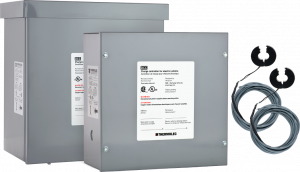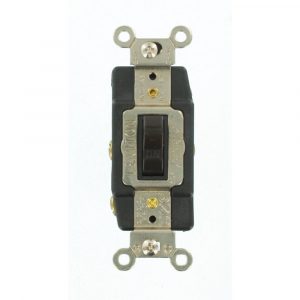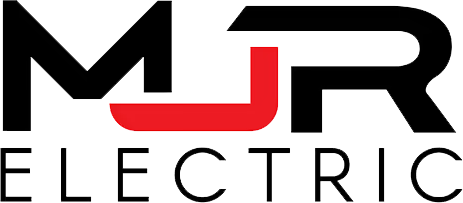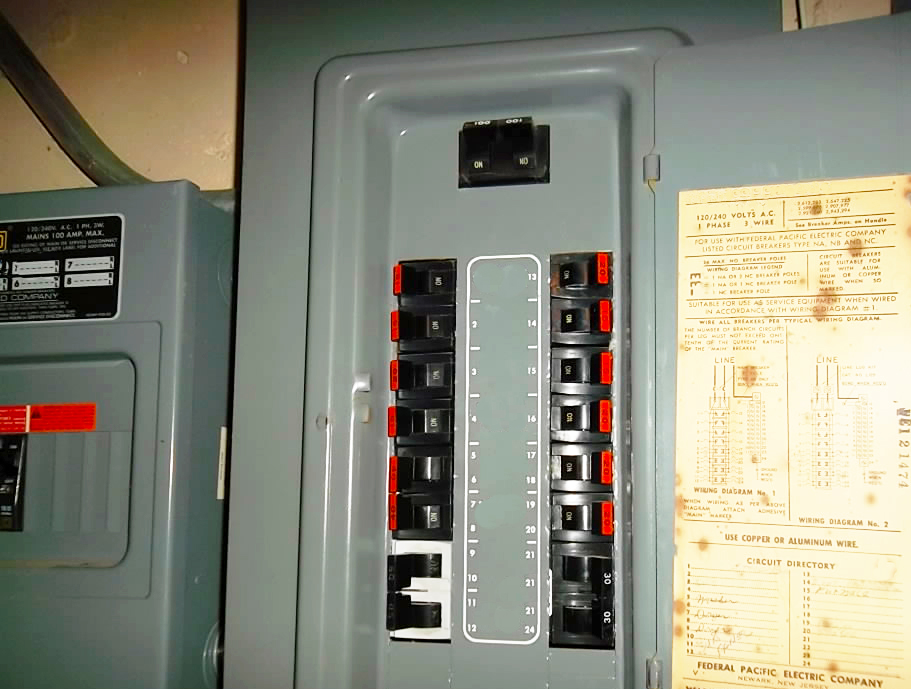Welcome back to the MJR blog space, where we’re going to keep content coming based on all things EV Charging. Many of you may have, or have thought about purchasing an Electric Vehicle, and need to consider how you’re going to provide a level 2 charging station for your new or prospective vehicle. However, your after your demand calculation is complete, your electrician has told you something along the lines “your panel is overloaded”, or “your demand calculation with an EV exceeds your panel’s capacity”. You still want a Level 2 charging station for your new or prospective EV, and you want to ponder different solutions.
This week we’ll take a look at the Top 3 Solutions for installing an EV charger on a panel that’s currently overloaded.
#1 Have the electrician perform a service upgrade to 200A capacity
If a homeowner has an existing 100A service, but has a separate basement suite with separate range, dryer, and with electric baseboard heating through the house, their panel will be close to capacity and will not have the room for an additional EV charging station. For the majority of homeowners, a 200A panel should provide enough space for an EV charging station to be installed without exceeding the permissible electrical demand space.
There are exceptions if you have high kW rated equipment, such as steam saunas, pools, hot tubs etc, but for the majority of homeowners, 200A will give more than enough room for an EV charger. This is usually the most costly option as a overhead service upgrade + EV charger installation + BC Hydro permits and labour will be close for $6000 for everything depending on which region you reside in. Good news is that most contractors can coordinate with Hydro to get everything done in a day, so your upgrade is done with limited disruption to your regular electrical usage. You also get further flexibility for additional electrical devices to be installed in the future, as 200A gives the homeowner a lot of power.

#2 Have an electrician install a distribution control center or load miser device
This allows for the additional EV demand without affecting your overall demand calculation.
There’s a few different models of DCC, but I’ll speak to the one I’m most familiar with and most popular, a DCC-10.
How it works- the DCC-10 measures the total amount of current your panel is currently demanding from BC Hydro service and allows or disallows the EV charging circuit to operate, depending on the measurement. When your panel exceeds 80% of your allowable demand- the EV charging circuit is effectively shut off and cannot charge.
So for a homeowner with a 100A panel that is using over 80A at a given time- the EV circuit will not charge. When the DCC measures the current demand is less than 80%, the EV charger circuit can resume or begin charging.
The DCC-10 can be almost universally installed and negates your requirement of a service upgrade. The load of the EV charger is not added to your overall demand calculation with a DCC-10 installation, as the device will prevent your panel from being overloaded.

The cost of the device itself is $1200, and adds multiple hours to an EV charger installation. Cheaper than a service upgrade overall, but still an expensive installation at $2500+.
#3 Decommission devices, and/or install an ATS or MTS
I get the “we have this, but we never use it” all the time from prospective clients. If this is truly the case, decommissioning a second range or some baseboard heaters or a sauna used for storage could save some kW in your overall demand calculation. If it’s on the panel, it has to be accounted for. Decommissioning a circuit means removing the wires from the panel into a separate junction box, removing the breaker from the panel, and disconnecting the wires on the device end. This represents the cheapest option, but still requires a few hours of work, and will increase the cost by a bit, and remove your ability to use previously installed electric devices.

If the decommissioning option isn’t convenient, installing a MTS or ATS may be an option. A MTS or ATS can be electrically interlocked with a dryer or other large electric device to reduce your demand calculation and give you a little more room for an EV circuit. Switching the live circuits has to be done manually in the case of a MTS via a switch, or automatically via similar electronics as the DCC-10 for the ATS. In either case, a circuit provides power for only 1 of the sub-circuits, and the EV charging station and other electric device cannot be provided power at the same time. A MTS costs less than an ATS, and the price fluctuates heavily depending on what size and manufacturer you select for your situation. Expect anywhere from $200-$1000 to be added to your cost of installation of a Level 2 station.
Need Help With An EV Project?
Hope that list gives many of you facing an overloaded panel situation some insight into what your options are, and how much they cost. Each situation is different, and some options are more practical than others. Have a conversation with your contractor and see what options fit you and your situation best. Sometimes the cheapest budget isn’t practical, sometimes the most expensive upgrade isn’t necessary. Good luck!
To learn more about the types of electric vehicle charging solutions we provide, head over to our EV Charging page. If you have any immediate questions, or want to talk through a new project, please reach out to us on 778-776-4781, or submit your query via web form.
And if you want to explore the different types of EV Charging products available to you, visit our shop page.

